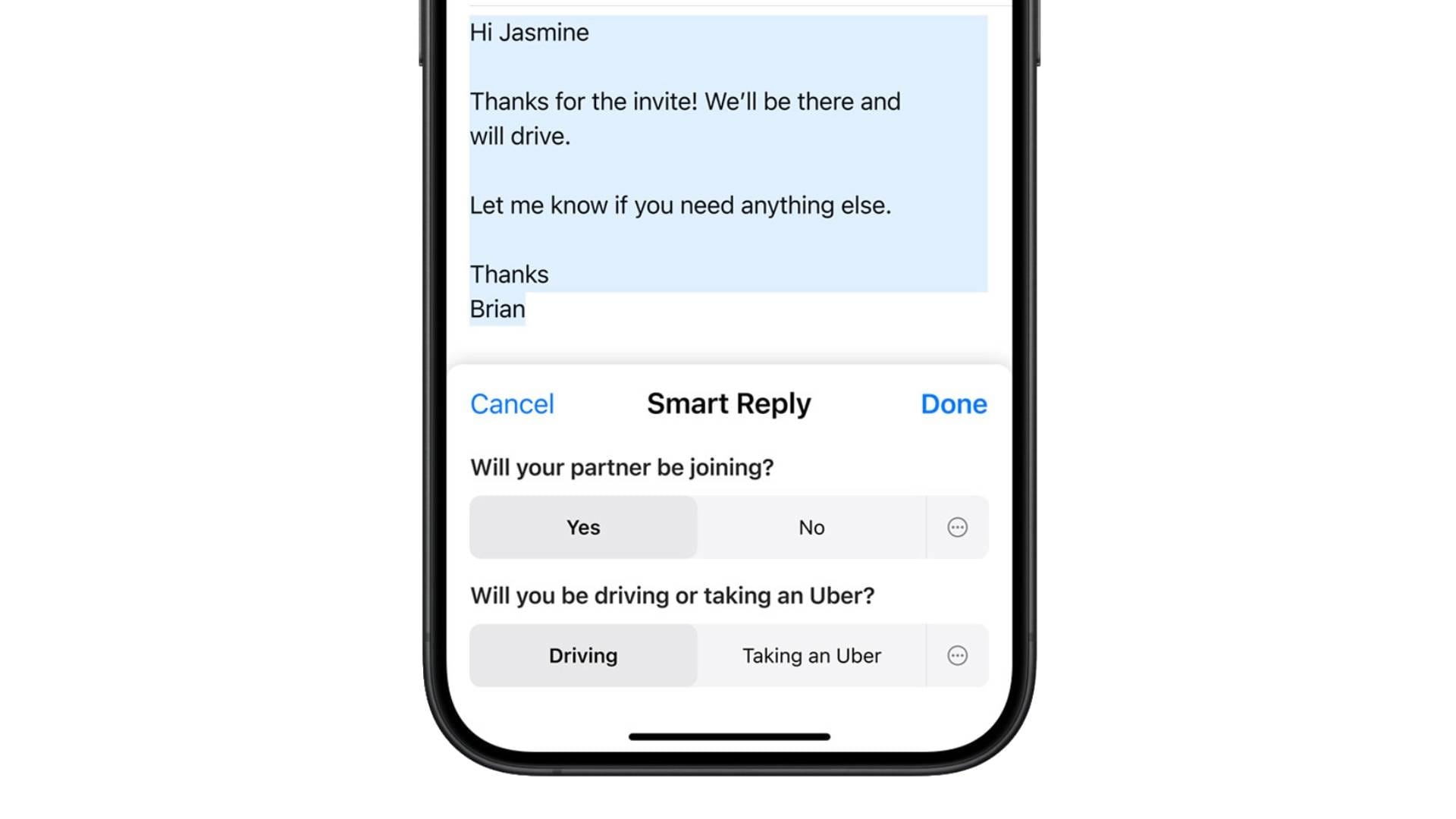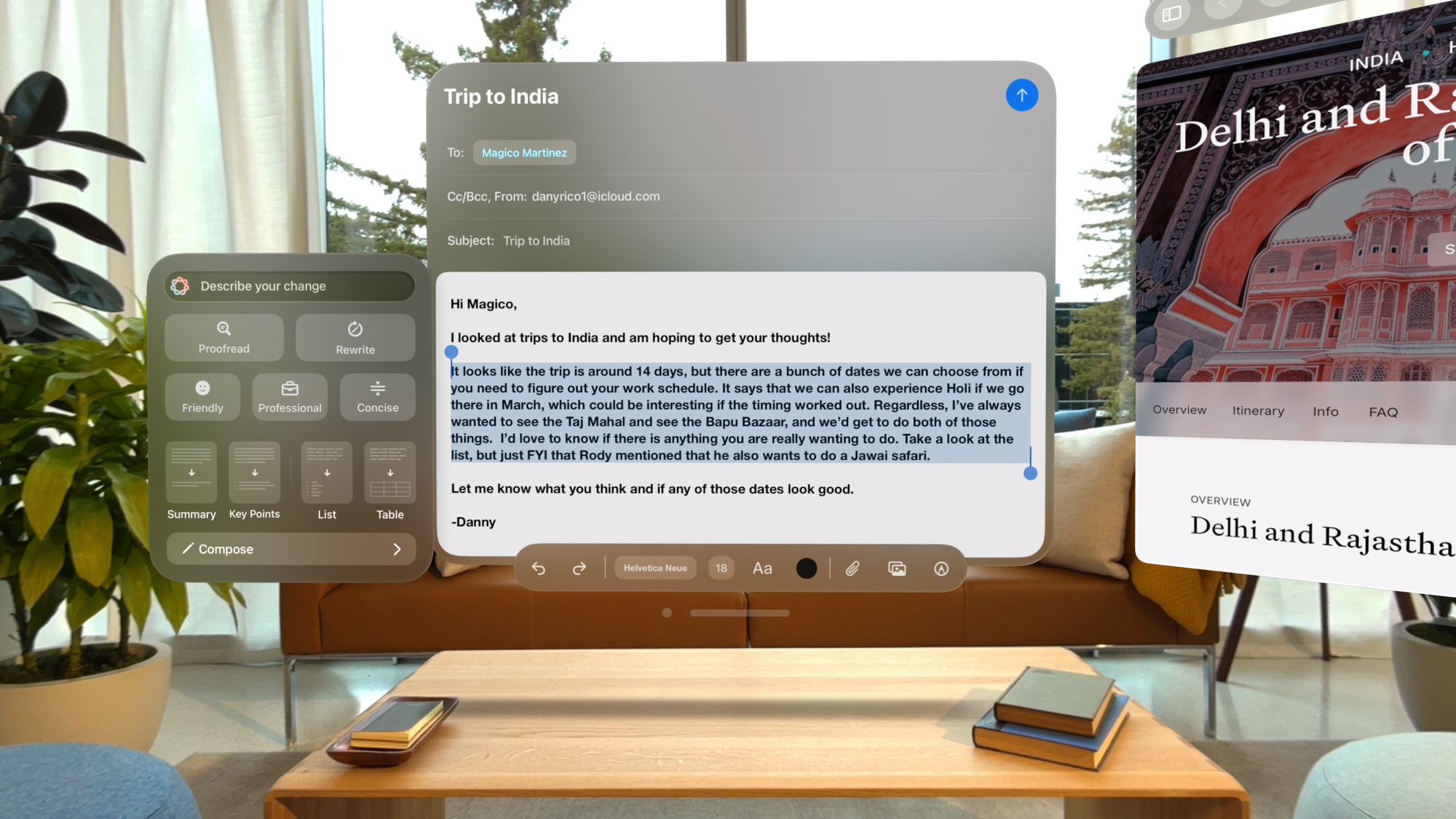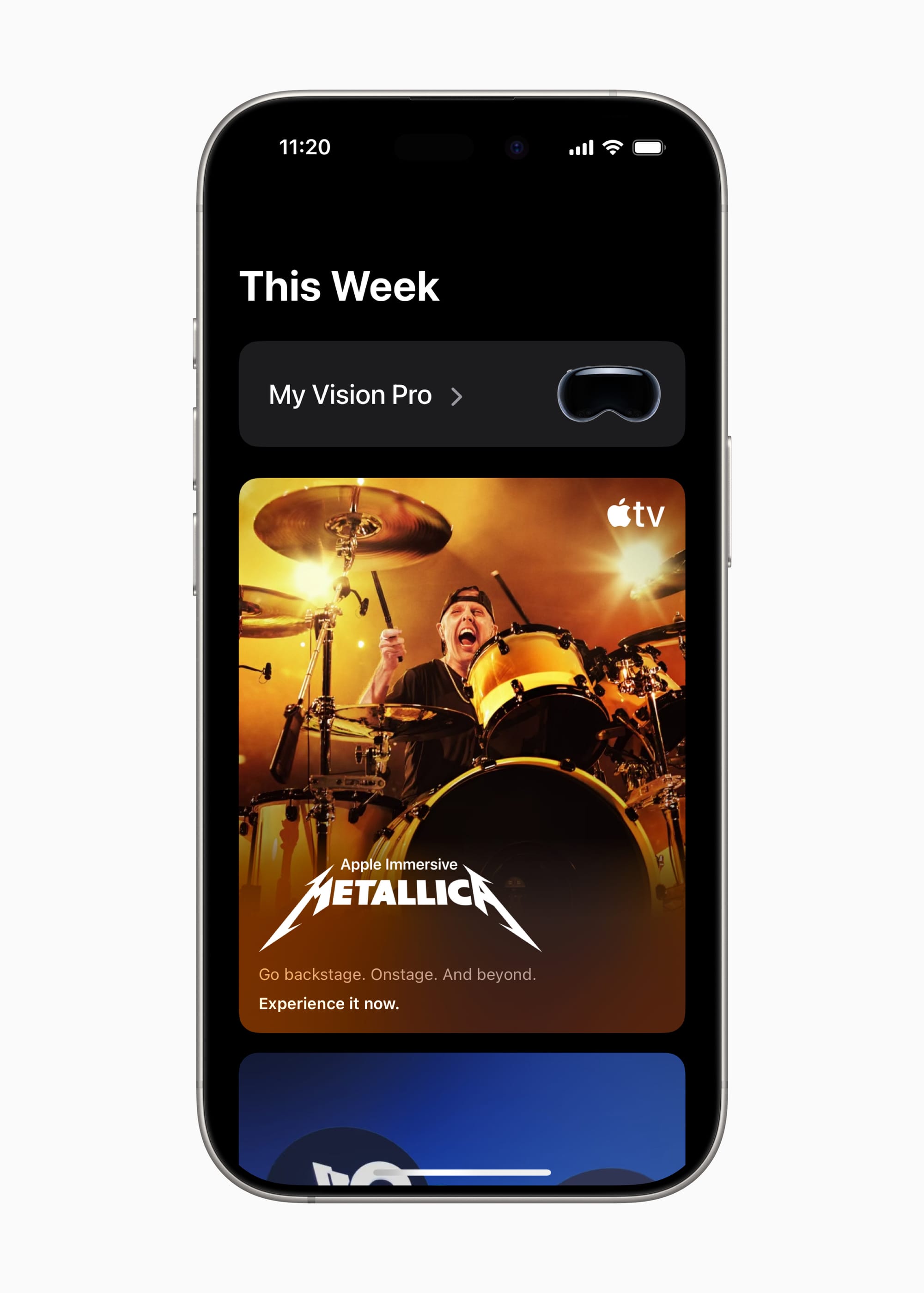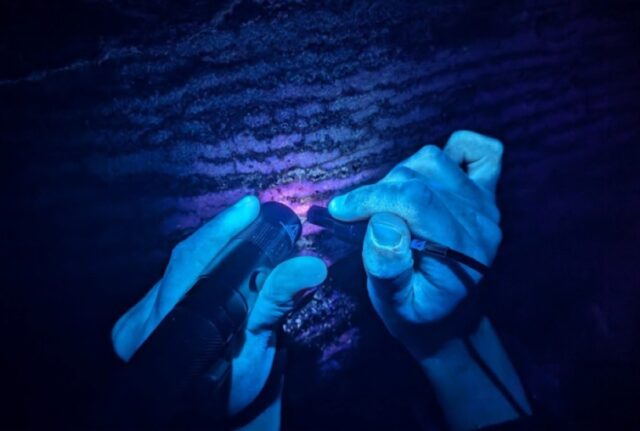While the first quarter is coming to an end, there has already been immense progress this year to the Wayland protocols and compositors along with associated Linux desktop software for embracing this alternative to legacy X11/X.Org. From HDR color management seeing much adoption this quarter to Wine Wayland becoming more viable and the large number of Wayland compositors maturing, it was a pretty incredible quarter…
Monthly Archives: March 2025
T-Mobile Class-Action Payouts Are Just About on Their Way
If you’re expecting money from T-Mobile, there’s good news: Your check should be just about on its way.
As spotted by PCMag, T-Mobile’s data breach settlement page now reports the following: “All court proceedings are now complete. The distribution of settlement payments is expected to begin April 2025.” So long as payments roll out on time, claimants can expect their checks to start shipping out sometime this month.
Why was T-Mobile sued?
These payments are tied to a class-action lawsuit from an August 2021 data breach. Hackers stole information from tens of million of current and former T-Mobile customers, including first and last names, birth dates, Social Security numbers, and driver’s license information. T-Mobile originally claimed the hackers only compromised the data of 7.8 million current customers and 40 million former customers, but customers filed the lawsuit alleging the true number was around 76 million.
While T-Mobile did not admit fault, the company did settle the suit, agreeing to a $350 million settlement payout. In addition, the company had to pay $150 million to beef up its security around customer data. The entire debacle cost T-Mobile half a billion dollars.
How much are the payments?
How much claimants actually receive from this settlement could be dependent on the amount of time and money they spent trying to fix their security issues. Claimants had to show documentation of their efforts, and could be reimbursed for both the money spent as well as an additional $25 per hour to compensate for their time—for a maximum possible payout of $25,000. Alternatively, victims could simply accept a $25 payment to put the entire case to rest. (If you lived in California at the time, that payout jumped to $100.)
Unfortunately, it’s far too late to claim a payment in this case—that deadline ended on January 23, 2023. If you made a claim, you should have been contacted in October of last year.
I’m sorry if this news is arriving too late for you to claim money from the suit. However, if you did make a claim before that 2023 deadline, your Monday probably just got a little better.
Raking Song Lyrics Into The Sand As The Tide Comes In
These are several videos of unique hobbyist Brighton Denevan, who rakes the lyrics to songs in the sand at the beach while his drone captures the footage from above, then syncs the timelapse videos so the appearance of the lyrics coincide with the songs. All while the tide comes in and begins washing the lyrics away. Very nice. It might not be the way I’d spend a Saturday morning, but laying in bed on death’s doorstep complaining the hangover pills I took didn’t work and I’m going to sue isn’t for everyone.
@brighton.denevan SEE IT SWIMMIN! • Created March 27, 2025 • Central Coast, California #pixies #lyricvideo #sandart ♬ Where Is My Mind? – Pixies
@brighton.denevan WASH AWAY THE RAIN • Created February 24, 2025 • Corcoran Beach, Santa Cruz #pleasurepoint #sandart #lyricvideo #soundgarden ♬ Black Hole Sun – Soundgarden
@brighton.denevan YOUR FREDOM • Created March 14, 2025 • San Mateo County #fleetwoodmacdreams #lyricvideos #sandart ♬ Dreams (2004 Remaster) – Fleetwood Mac
@brighton.denevan TODAY SEEMS KINDA ODD • Created March 14, 2025 • San Mateo County, California #icecube #lyricvideo #sandart ♬ It Was A Good Day By Ice Cube – mangoo
My Favorite Portable Projector Is $70 Off Right Now
We may earn a commission from links on this page. Deal pricing and availability subject to change after time of publication.
I’ve been testing portable projectors for a bunch of different use cases, but few, if any, have come close to the complete package offered by the XGIMI MoGo 3 Pro. It’s my favorite of the lot, and right now, you can get the XGIMI MoGo 3 Pro portable projector for $379 )down from $449.99) and get your choice of the Creative Optical Filter (normally $49.99) or the XGIMI Carrying Case (normally $69.99).
Alternately, you can spend a bit more and get the PowerBase Stand and projector combo for $424.99 (originally $499.99). Whichever you choose, you’ll be scoring an all-time low price, according to price tracking tools.
$379.99
at Amazon

Save $119.99

$379.99
at Amazon

Save $119.99
$379.99
at Amazon

Save $139.99

$379.99
at Amazon

Save $139.99
$424.99
at Amazon

Save $75.00

$424.99
at Amazon

Save $75.00
The projector has two ports—a USB and a micro HDMI—so you can project from a laptop or phone, or you can simply screen mirror from your devices, since it uses the Google TV OS. Also, since the projector is “smart,” it already comes with the typical apps like Netflix, YouTube, Amazon, and you can download more from the Google Play Store. With 450 lumens and 1080p, it’s best used in dark rooms, but you can get away with some ambient light (that’s how I use it in my backyard).
Where this projector truly shines is with the auto keystone focus feature. If you move it anywhere, it’ll autocorrect to make the image look its best regardless of where you set it up. It also comes with a powerful 5W Harman Kardon speaker, which performs about on par with an Echo Dot.
One caveat: This projector has no internal battery, which is a huge bummer. You’d need to use a portable charger, plug it into an outlet, or, perhaps more practically, spend the extra $45 to get the PowerBase Stand, which delivers 2.5 hours of battery life. If you plan to use it mostly indoors, you can rely on plugging it into a wall and go for one of the free items to save some money.
Apple updates all its operating systems, brings Apple Intelligence to Vision Pro
Apple dropped a big batch of medium-size software updates for nearly all of its products this afternoon. The iOS 18.4, iPadOS 18.4, macOS 15.4, tvOS 18.4, and visionOS 2.4 updates are all currently available to download, and each adds a small handful of new features for their respective platforms.
A watchOS 11.4 update was also published briefly, but it’s currently unavailable.
For iPhones and iPads that support Apple Intelligence, the flagship feature in 18.4 is Priority Notifications, which attempts to separate time-sensitive or potentially important notifications from the rest of them so you can see them more easily. The update also brings along the handful of new Unicode 16.0 emoji, a separate app for managing a Vision Pro headset (similar to the companion app for the Apple Watch), and a grab bag of other fixes and minor enhancements.
Our Hopes And Predictions For The Switch 2 Nintendo Direct

We’re less than 48 hours away from the Switch 2 deep-dive everyone’s been waiting months for, and the biggest questions around power, price, release timing, and launch lineup still remain. Will Nintendo play it safe as it seems to have done so far with the new hardware, or has it been patiently keeping a big surprise…
Honey Lost 4 Million Chrome Users After Shady Tactics Were Revealed
The Chrome extension Honey has lost over 4 million users after a viral video exposed it for hijacking affiliate codes and misleading users about finding the best coupon deals. 9to5Google reports: As we reported in early January, Honey had lost around 3 million users immediately after the video went viral, but ended up gaining back around 1 million later on. Now, as of March 2025, Honey is down to 16 million users on Chrome, down from its peak of 20 million.
This drop comes after new Chrome policy has taken effect which prevents Honey, and extensions like it, from practices including taking over affiliate codes without disclosure or without benefit to the extension’s users. Honey has since updated its extension listing with disclosure, and we found that the behavior shown in the December video no longer occurs.
Read more of this story at Slashdot.
visionOS 2.4 Out Now, Bringing Apple Intelligence, Spatial Gallery & iPhone Integration
visionOS 2.4 is out now, bringing Apple Intelligence to Vision Pro, a Spatial Gallery app, an iPhone app for remote installs, and a new iPhone/iPad-driven guest flow.
The last significant visionOS update was 2.2 in December, which brought the Wide and Ultrawide Mac Virtual Display modes. visionOS 2.3 instead focused on bug fixes and security updates.
The first visionOS 2.4 developer beta released in February, when Apple announced visionOS 2.4, and now the stable release is available for all Apple Vision Pro owners.
Apple Intelligence
Apple Intelligence is the company’s name for its generative AI features. Some features run on-device, while others are offloaded to the company’s Private Cloud Compute (PCC) servers, and certain requests reach out to OpenAI’s ChatGPT, if you give permission for that.
Apple Intelligence arrived on iPhones (15 Pro and later), iPads (M-series or A17 Pro chips only), and Macs (M-series chips only) late last year, and Apple didn’t say at the time whether Vision Pro would get it too.
With visionOS 2.4 Apple has brought the following Apple Intelligence features to Vision Pro: Priority Notifications, Notification Summaries, Smart Reply, Memory Movie creation and Natural Language Search in Photos, Priority Messages & Mail Summaries In Mail, Writing Tools, Image Wand in Notes, Genmoji, and Image Playground.
At launch, Apple Intelligence on Vision Pro only supports US English, with “additional languages” coming later this year.
Priority Notifications & Notification Summaries
Apple Intelligence automatically decides which notifications are most important, such as messages from loved ones about imminent events, and surfaces them at the top of the notification stack.
Further, longer notifications and groups of notifications from the same apps show an AI-generated summary in place of their content. We should note that this feature has been widely criticized for sometimes misconstruing the content of notifications, however.
Tapping the notification summary brings up the original notification.
Smart Reply In Messages & Mail
Smart Reply “identifies questions and suggests relevant replies” to messages and emails, which Apple says lets you “easily respond to texts and emails with just a few taps” on Vision Pro.

This feature should be particularly useful when you don’t have a Bluetooth keyboard connected at least, since floating virtual keyboards are slower to type on than touchscreen keyboards.
Memory Movies & Natural Language Search In Photos
In the Photos visionOS app, Apple Intelligence brings the ability to generate a Memory Movie, as well as more advanced search.
“Simply type a description, and Apple Intelligence will pick out the best photos and videos, craft a storyline with chapters based on themes identified from the photos, and arrange them into a movie with its own narrative arc and a soundtrack,” Apple explains.
0:00
Meanwhile, the Natural Language Search feature lets you find photos and videos in your library by just describing them.
Priority Messages & Mail Summaries In Mail
Just like with notifications, in the visionOS Mail app Apple Intelligence surfaces the most salient messages at the top of the stack.
Each email in the list has an AI-generated short summary of its content, instead of just the first line as in traditional email clients.
Further, upon opening an email you can choose to AI-generate a medium-length summary of its content.
Writing Tools
The Writing Tools feature offers four kinds of tools for “rewriting, proofreading, and summarizing” long-form text that you type or dictate “nearly everywhere” in visionOS, including Mail, Notes, and many third-party apps.

These tools are:
- Proofread: “checks grammar, word choice, and sentence structure with suggested edits”.
- Rewrite: “adjust the tone of text to make it more friendly, professional, or concise”, or use Describe Your Change to specify the exact kind of change you want.
- Summarize: recap the text, break it out into Key Points, or turn it into a bullet point list or table.
- Compose: leverages OpenAI’s ChatGPT to generate any kind of textual content.
Image Wand In Notes
Image Wand in the visionOS Notes app lets you “create images based on rough sketches you create”, or AI-generate an entirely new image “based on words and images from the surrounding area”.
Genmoji In iMessage
Genmoji is Apple’s feature to generate your own custom emoji in iMessage by typing or speaking a description of it.
0:00
Within iMessage, these Genmoji can “be added inline to messages, shared as a sticker, or sent as a Tapback”.
Image Playground
Image Playground lets you AI-generate “fun and unique images from themes, costumes, accessories, and places”.
0:00
According to Apple, “users can add their own text descriptions, and can even create images in the likeness of a family member or friend using photos from their photo library.”
Image Playground is integrated into apps like Messages and Freeform, and is also available as a new standalone visionOS app.
Spatial Gallery
Spatial Gallery is a new visionOS app from Apple that “features a curated collection of spatial photos, spatial videos, and panoramas from artists, filmmakers, photographers, and more.”
At launch, Apple says it offers “remarkable perspectives from photographers like Jonpaul Douglass and Samba Diop; new stories and experiences from iconic brands including Cirque du Soleil, Red Bull, and Porsche; behind-the-scenes moments from Apple Originals like Disclaimer, Severance, and Shrinking; and special moments from top artists.”
0:00
Rather than being an open platform like YouTube or Vimeo, which added spatial video support in October, Apple’s Spatial Gallery sounds like a highly curated closed platform, offering quality over quantity.
Spatial Gallery will be available in all Apple Vision Pro countries except for mainland China.
Apple Vision Pro iPhone App
The new Apple Vision Pro app for iPhone lets you remotely queue apps to download & install to your headset, see device information, and browse curated recommendations of the best visionOS content.
The My Vision Pro interface shows device tips, the current visionOS version, and the serial number. It also lets you set up Personalized Spatial Audio by scanning your face shape with your iPhone’s TrueDepth sensor.

Meanwhile, the Discovery interface shows “popular apps and games on the App Store; nearly 300 3D movies, Apple Immersive titles, and more video content on the Apple TV app; and the latest spatial photos, spatial videos, and panoramas featured in the Spatial Gallery”.
The Apple Vision Pro app is part of iOS 18.4, and is also downloadable from the iOS App Store.
iPhone/iPad-Driven Guest User Mode
Previously, initializing Guest User mode on Vision Pro required putting on the headset and unlocking it first, and if there were any issues you needed to adjust for after the guest put the headset on, you needed to do that all over again. From experience, this led to frustration.
With visionOS 2.4, Apple has added the ability to approve Guest User mode from a nearby iPhone or iPad signed in to the same Apple Account.
0:00
As with the in-headset Guest User interface, this iPhone/iPad interface lets you choose which apps the guest has access to, as well as initiate View Mirroring with AirPlay.
This Kodak Printomatic Instant Print Camera Is on Sale for $60 Right Now
We may earn a commission from links on this page. Deal pricing and availability subject to change after time of publication.
The Kodak Printomatic Mini Instant Print Camera is about the size of a power bank, light enough to toss in your pocket, and quick to fire up when something photo-worthy happens. You snap, it prints, and you get a little sticker photo you can slap on your scrapbook, phone case, bedroom wall, or wherever you want. There are no cables, ink cartridges, or waiting for an app to sync—you can just point, shoot, and print, and it’s on sale for $59.99 on StackSocial right now. It’s obviously more of a playful gift or party gadget than something you’d use for serious photography, but if you want to instantly hand out memories, especially to kids or during events, it does the job with minimal effort and no mess.
As mentioned, this isn’t a camera you buy for image quality. It maxes out at 5MP, so the photos are more for fun than for framing. The 2×3-inch prints come out smudge-proof and water-resistant, though, thanks to its Zero Ink tech—Kodak ZINK photo paper—which eliminates the need for ink cartridges. You won’t get film-like depth or editing options here. There’s a wide-angle 8mm lens with an f/2 aperture and an automatic flash that kicks in when lighting is trash, but you’re not shooting your next short film on this thing. Still, you can keep taking photos while it prints in the background, making it a decent companion for chaotic birthdays or travel days when you’re hopping from one view to the next.
As for the fine print, it doesn’t come with a charging cable, which is an odd omission considering it uses a built-in rechargeable battery and charges via MicroUSB. And while it comes with a small starter pack of ZINK paper, if you plan to go full scrapbook mode, you’ll want to stock up. You’ll also need to have a microSD card separately if you want to save your photos digitally. There’s no screen—just a basic viewfinder—and no real control over how your images turn out. But for people who just want to point, shoot, and print something instantly, it nails that simple joy.
ChatGPT gained one million new users in an hour today
OpenAI has been doubling its audience for ChatGPT at a rapid rate, and the addition of its latest image generation feature has increased the AI assistant’s popularity. Today, CEO Sam Altman posted to X that the service “added one million users in the last hour,” calling it a “biblical demand” for the image generation.
the chatgpt launch 26 months ago was one of the craziest viral moments i’d ever seen, and we added one million users in five days.
we added one million users in the last hour.
— Sam Altman (@sama) March 31, 2025
When the company announced the rollout of image generation in ChatGPT last week, the tool was meant to be available to all user tiers. However, the high degree of interest meant that access for free users was walked back. Now, the company is reporting “issues with new signups,” which has been its status for more than a day.
While ChatGPT’s ability to create original images has been a delight (and occasional horror show) for users, the AI platform continues to draw the ire of artists and creatives. Many of these people have their work taken, either as training material for the large-language model scraped from the internet or improperly taken and modified by ChatGPT users, without any credit or compensation. One of the more visible examples have been the many memes image inspired by the animation style of Studio Ghibli. Altman is currently using one such image as his X profile photo, but other users have used ChatGPT to apply the look of the studio’s films to violent or triggering content, raising a fresh round of questions about how creators can protect their work from misuse.
This article originally appeared on Engadget at https://www.engadget.com/ai/chatgpt-gained-one-million-new-users-in-an-hour-today-201314746.html?src=rss
DOGE accesses federal payroll system and punishes employees who objected
Elon Musk’s Department of Government Efficiency (DOGE) has gained access “to a payroll system that processes salaries for about 276,000 federal employees across dozens of agencies,” despite “objections from senior IT staff who feared it could compromise highly sensitive government personnel information” and lead to cyberattacks, The New York Times reported today.
The system at the Interior Department gives DOGE “visibility into sensitive employee information, such as Social Security numbers, and the ability to more easily hire and fire workers,” the NYT wrote, citing people familiar with the matter. DOGE workers had been trying to get access to the Federal Personnel and Payroll System for about two weeks and succeeded over the weekend, the report said.
“The dispute came to a head on Saturday, as the DOGE workers obtained the access and then placed two of the IT officials who had resisted them on administrative leave and under investigation, the people said,” according to the NYT report. The agency’s CIO and CISO are reportedly under investigation for their “workplace behavior.”
ChatGPT ‘Added One Million Users In the Last Hour’
OpenAI is having another viral moment after releasing Images for ChatGPT last week, with millions of people creating Studio Ghibli-inspired AI art. In a post on X today, CEO Sam Altman said the company has “added one million users in the last hour” alone. A few days prior he begged users to stop generating images because he said “our GPUs are melting.”
Read more of this story at Slashdot.
GTA 6’s Second Trailer Will Likely Arrive Closer To Launch, Says Take-Two CEO

483 days ago, Rockstar Games released the first trailer for Grand Theft Auto 6. And assuming GTA 6 doesn’t get delayed, the CEO of Rockstar parent company Take-Two seems to have indicated that fans might have to wait a few more months yet before another GTA 6 trailer arrives.
Research roundup: 2,400-year-old clay puppets; this is your brain on Klingon
It’s a regrettable reality that there is never time to cover all the interesting scientific stories we come across each month. In the past, we’ve featured year-end roundups of cool science stories we (almost) missed. This year, we’re experimenting with a monthly collection of such stories. March’s list includes fascinating papers on such topics as how the brain responds to speaking Klingon (or Dothraki, or Navi), the discovery of creepy preclassic Salvadoran puppets, the effectiveness of “dazzle camouflage,” and how male blue-lined octopuses manage not to be cannibalized by their chosen mates.
Wind Cave’s rocks fluoresce under black light

Several fluorescence measurements of a zebra calcite in Wind Cave were taken using portable spectrometers.
Credit:
Joshua Sebree
South Dakota’s Wind Cave gets its name from the flow of air moving continually through its many passages and equalizing the atmospheric pressure between the air inside and outside—almost like the cave is “breathing.” Its rock and mineral formations also boast a unique chemistry that fluoresces when exposed to black light, according to talks presented at the spring meeting of the American Chemical Society in San Diego. That fluorescence could shed light on how life can thrive in extreme environments, including that of Jupiter’s moon, Europa.
University of Northern Iowa astrobiologist Joshua Sebree and several students have been mapping new areas of Wind Cave (as well as other caves in the US), recording the passages, rock formations, minerals, and lifeforms they encounter in the process. They noticed that under UV light, certain parts of Wind Cave took on otherworldly hues, thanks to different concentrations of organic and inorganic fossilized chemical compounds. Those areas seem to indicate where water once flowed, carrying minerals into the cave from the surface 10,000 to 20,000 years ago, according to their analysis of the fluorescent spectra. Sebree et al. found that Wind Cave was likely carved out by waters rich in manganese, producing zebra stripes that glow pink under UV light, revealing the calcites that grew within as a result of those waters.
Open Source Genetic Database Shuts Down To Protect Users From ‘Authoritarian Governments’
An anonymous reader quotes a report from 404 Media: The creator of an open source genetic database is shutting it down and deleting all of its data because he has come to believe that its existence is dangerous with “a rise in far-right and other authoritarian governments” in the United States and elsewhere. “The largest use case for DTC genetic data was not biomedical research or research in big pharma,” Bastian Greshake Tzovaras, the founder of OpenSNP, wrote in a blog post. “Instead, the transformative impact of the data came to fruition among law enforcement agencies, who have put the genealogical properties of genetic data to use.”
OpenSNP has collected roughly 7,500 genomes over the last 14 years, primarily by allowing people to voluntarily submit their own genetic information they have downloaded from 23andMe. With the bankruptcy of 23andMe, increased interest in genetic data by law enforcement, and the return of Donald Trump and rise of authoritarian governments worldwide, Greshake Tzovaras told 404 Media he no longer believes it is ethical to run the database. “I’ve been thinking about it since 23andMe was on the verge of bankruptcy and been really considering it since the U.S. election. It definitely is really bad over there [in the United States],” Greshake Tzovaras told 404 Media. “I am quite relieved to have made the decision and come to a conclusion. It’s been weighing on my mind for a long time.”
Greshake Tzovaras said that he is proud of the OpenSNP project, but that, in a world where scientific data is being censored and deleted and where the Trump administration has focused on criminalizing immigrants and trans people, he now believes that the most responsible thing to do is to delete the data and shut down the project. “Most people in OpenSNP may not be at particular risk right now, but there are people from vulnerable populations in here as well,” Greshake Tzovaras said. “Thinking about gender representation, minorities, sexual orientation — 23andMe has been working on the whole ‘gay gene’ thing, it’s conceivable that this would at some point in the future become an issue.” “Across the globe there is a rise in far-right and other authoritarian governments. While they are cracking down on free and open societies, they are also dedicated to replacing scientific thought and reasoning with pseudoscience across disciplines,” Greshake Tzovaras wrote. “The risk/benefit calculus of providing free & open access to individual genetic data in 2025 is very different compared to 14 years ago. And so, sunsetting openSNP — along with deleting the data stored within it — feels like it is the most responsible act of stewardship for these data today.”
“The interesting thing to me is there are data preservation efforts in the U.S. because the government is deleting scientific data that they don’t like. This is approaching that same problem from a different direction,” he added. “We need to protect the people in this database. I am supportive of preserving scientific data and knowledge, but the data comes second — the people come first. We prefer deleting the data.”
Read more of this story at Slashdot.
Linux 6.15 Perf Tooling Introduces New Support For Latency Profiling
The perf tools changes were merged today for the Linux 6.15 kernel. Most notable this cycle for the wonderful perf tooling is introducing the notion of latency profiling by leveraging kernel scheduler information. This latency data will be further useful for Linux software engineers working to optimize system latency/performance…
Substack updated its app to make it even more like TikTok
Substack is taking one more step towards becoming an all-in-one social media / creator platform by adding a vertical video feed to its app. Technically, the new TikTok-style feed is a redesign of the existing Media tab that the company added to the app in 2024, but either way Substack’s intentions are clear: It wants a piece of the short-video pie currently being shared by Instagram, TikTok and YouTube.
The feed features scrollable videos from creators you’re subscribed to and others that have been algorithmically suggested. Multiple forms of short-form content can be included, like videos posted through Substack Notes, the company’s Twitter-esque microblogging feature, clips from longer video posts and eventually previews of podcasts.
Adding multimedia features like podcasts and videos has been a boon to creators, according to Substack. The company says that “82% of Substack’s top-earning writers are using multimedia, up from just over 50% last April.” Supporting short-form videos is an attempt to push things even further.
Substack added support for native video in 2022, expanded those features in 2023 and more recently, gave creators the ability to host live video streams in 2024. The company has been pretty upfront that it views Substack as a home for more than just newsletters, and it’s been trying to court TikTok creators specifically since at least 2024.
Redesigning the Substack app gives subscribers a new way to find creators to follow, and makes the platform a better home for a whole new type of creator. The timing of Substack’s change is purposeful. The extra breathing room President Trump gave TikTok by not enforcing the app’s ban is supposed to end in April, meaning there could be room for alternative vertical video apps.
This article originally appeared on Engadget at https://www.engadget.com/social-media/substack-updated-its-app-to-make-it-even-more-like-tiktok-193415204.html?src=rss
Lithium-ion battery waste fires are increasing, and vapes are a big part of it
2024 was “a year of growth,” according to fire-suppression company Fire Rover, but that’s not an entirely good thing.
The company, which offers fire detection and suppression systems based on thermal and optical imaging, smoke analytics, and human verification, releases annual reports on waste and recycling facility fires in the US and Canada to select industry and media. In 2024, Fire Rover, based on its fire identifications, saw 2,910 incidents, a 60 percent increase from the 1,809 in 2023, and more than double the 1,409 fires confirmed in 2022.
Publicly reported fire incidents at waste and recycling facilities also hit 398, a new high since Fire Rover began compiling its report eight years ago, when that number was closer to 275.
Is Open Source Initiative Staring Into the Face of Irrelevancy?
To the extent that Open Source Initiative is known, today it is perhaps best known for controversy rather than for its guardianship of open source.
The post Is Open Source Initiative Staring Into the Face of Irrelevancy? appeared first on FOSS Force.
This Refurbished 2020 MacBook Air Is on Sale for $440 Right Now
We may earn a commission from links on this page. Deal pricing and availability subject to change after time of publication.
If you’re looking for a MacBook without dropping over a grand, this refurbished 13″ 2020 Apple MacBook Air is going for $439.99 on StackSocial right now. That’s a fraction of the original price, and it comes with 8GB of RAM, a 256GB SSD, and a 1.1GHz dual-core Intel Core i3 processor. It’s not the latest and greatest, but it holds up surprisingly well for students, freelancers, or anyone who needs a decent everyday laptop for web browsing, emails, documents, and streaming. You’re also getting that bright 13.3-inch Retina display with True Tone, which still looks sharp and vibrant in 2024.
This model comes with the backlit Magic Keyboard and Touch ID, which makes unlocking your Mac or making secure purchases easy. The build is sleek, and at just under three pounds, it’s light enough to carry around all day. Battery life is also solid—you can expect up to 11 hours of wireless web use or 12 hours of video playback. Your mileage may vary depending on usage. You’ll get two Thunderbolt 3 (USB-C) ports for charging and accessories, and while that can feel limiting, a simple hub can easily expand your setup. It runs macOS and is compatible with updates to macOS Sonoma 14, so you’re not locked out of modern apps or features.
It’s rated Grade-A refurbished, so you might see minimal cosmetic wear, but performance should be unaffected. It ships with a MagSafe charger and comes with a 30-day parts and labor warranty from a third party, not Apple. That’s something to factor in if long-term support matters to you. It also won’t blow you away with speed or handle heavy creative work like video editing or 3D rendering. Still, this deal checks the right boxes for writing, streaming, Zoom calls, and basic productivity—especially if you just want a clean, modern MacBook without paying full price.
